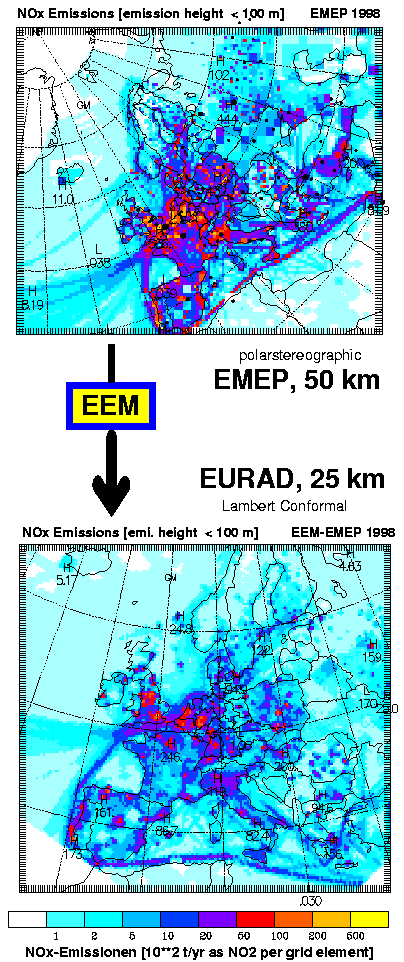Modelsystem EEM
The EURAD-Emission model (EEM) provides emission data for chemistry-transport-calculations with the EURAD-model. The EEM acts as an interface between emission data available for certain areas and periods and the CTM. Emission data available for simulation is seldomly found in a proper format which allows an immediate use in EURAD-CTM. EEM transforms emission-raw-data spatially onto the grid used by EURAD-CTM, provides the necessary chemical constituents (e.g. for the chemistry mechanism RADM2) and computes the desired emission rates with a temporal resolution of one hour.
For the european scale up to a meshwidth of 10 km EMEP-data is used unless there is no data of different sources. The emission data are then transformed from the EMEP-grid to any EURAD-grid with respect to population density. As an example the NOx emissions for PROSYS and ANABEL (supported by Landesumweltamt Nordrhein-Westfalen) are shown.
For special applications spatially and temporally highly resolved emission data for numerous chemical constituents are provided. These data is often only available for a certain area (e.g. for Northrhine-Westfalia with a resolution of 1km and for RADM2-components). During the Troposphärenschwerpunkt (TFS) supported by BMBF, high-resolution emission data were provided by the IER of the University of Stuttgart.
These data could be applied in the CTM simulation of the BERLIOZ-episode, for instance, and are a prerequisit for Nesting applications. Also are these data used further for chemistry-transport-calculations with the EURAD-system in the BMBF supported Atmosphere Research Program 2000 (AFO 2000) in the projects SENEVA and SATEC4D.
